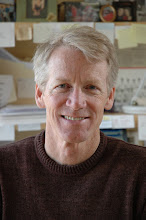
Happy EV Owner
Seven years and 77,700 miles - all on sunlight.
Hey Everybody,
When I started writing this blog, some three years ago, it was an email list sent to our Electric Vehicle Association of Southern California members, and to many of my Plug In America friends. We were all trying to spread the word about these new era plug-in electric cars that were coming soon, and how great they were going to be. Back then, there were few stories to report on, but now, it's a torrent of news. The momentum of money, and the growing understanding of the technology, is evident.
There are now over 1200 of you on this list with new ones added every day. Friends tell friends to start paying attention since buying a car is not something you do every year. The next purchase needs to be the right one. Buying a dirty oil burner just as the electrics are coming on line would be a huge mistake. The next time the oil companies, and those wonderful sheiks of Saudi Arabia, decide to charge $4.50 a gallon, what are you going to do? The trick is, do you wait till 300 million other Americans want an EV, or do you get one now?
We're witnessing history in fast forward. In a few short years, maybe 2014 or 2015, it'll be obvious to everybody that batteries will take over. As the early adapters drive their shiny new EVs home, show them to the neighbors and describe the benefits - and the incredible feeling of driving a quiet, powerful, non-polluting car - word will spread fast. I know Nissan and GM are nervous about how many will sell, but trust me, this is going to be fun.
Having said all that, there is still work to be done. Plug In America has been THE leading organization providing the education of legislators, regulators and the general public on the idea of using cleaner, cheaper, domestic electricity instead of dirty, expensive, foreign oil as the energy that drives our cars.
I've never made an ask like this with my blog, but now's as good a time as any.
We are sending two of our best speakers to the Austin Climate Protection Conference & Expo. We'll have our booth and be speaking on at least one panel, maybe two. We are cutting costs as much as possible, but there are expenses totaling one thousand dollars.
If you feel that having the choice to drive a car that never pollutes is worth anything, if you feel that never giving the oil companies another dime has value to you, then please send what you can to Plug In America (we're a 501 c-3) and help us with this gig. I promise, Marc Geller and I will spread the word to a lot of good Texans!
To contribute, go to http://www.pluginamerica.org/.

Just for fun: This is our friend and neighbor, Russell, an artist with flair (who also has EV & PV). He painted this mural at our house as a gift to us for our efforts to the cause (can you spot the kitties?). After completing the job, he was so happy he levitated. Never saw that before, but was happy to have a camera at the ready. Thanks Russell!
Thanks everybody, and have a great New Year!
Paul
******















